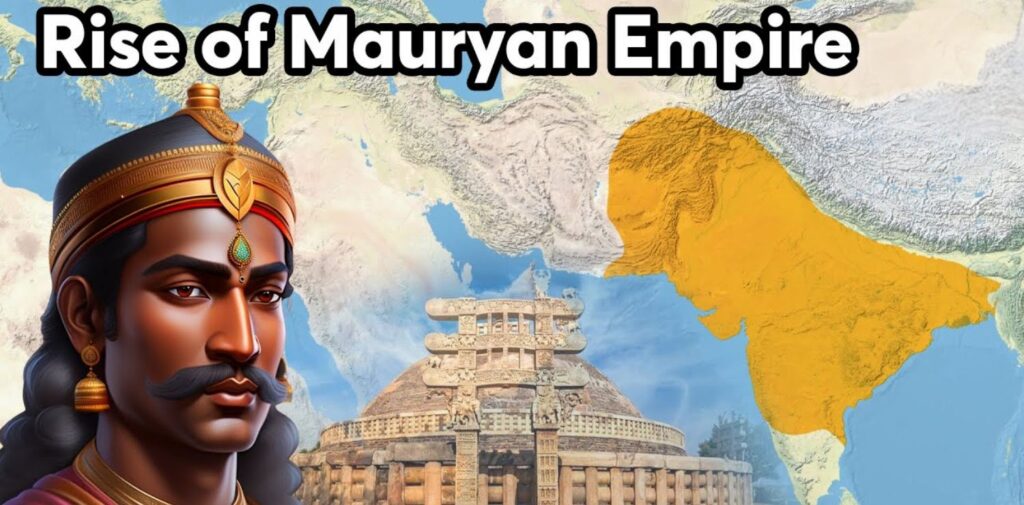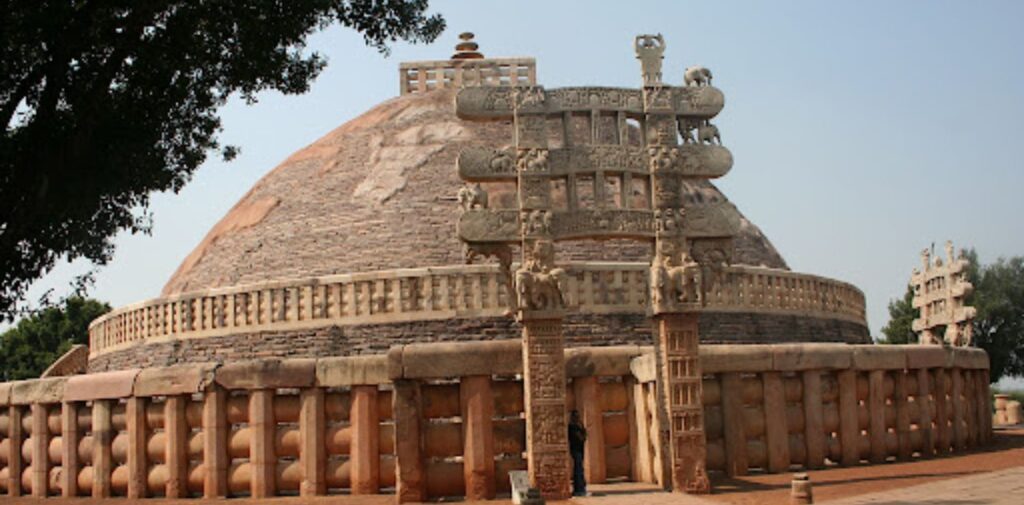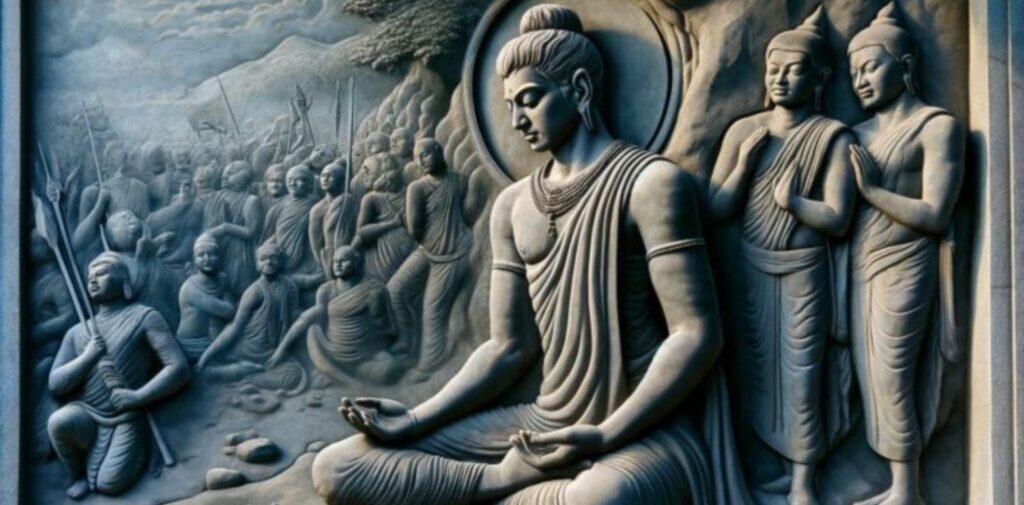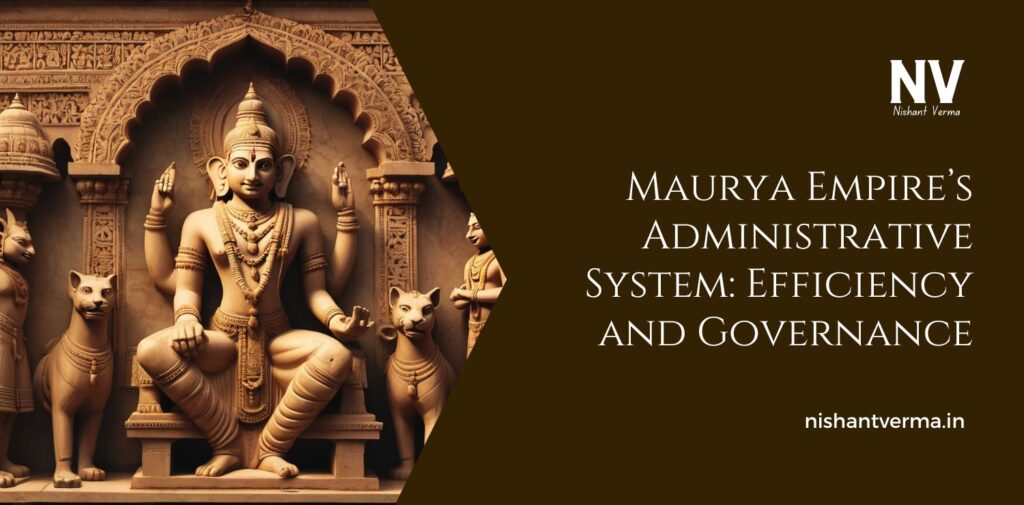The Maurya Empire is one of the greatest and most powerful empires in ancient Indian history. It was founded by Chandragupta Maurya around 321 BCE, and under his rule, and later his grandson Ashoka, the empire grew to become one of the largest in the world at that time. The success of the Maurya Empire wasn’t just due to its powerful army or great kings, but also because of its very smart and well-organized administrative system.
In this article, we will explore how the Maurya Empire’s administration worked, how the empire was governed, and how it became so successful. We will learn about how the system was designed to keep the empire running smoothly, with the help of efficient governance, taxation, laws, and many other smart ideas.
The Rise of the Maurya Empire
The Maurya Empire started with Chandragupta Maurya, who was a young, ambitious leader. He overthrew the powerful Nanda Dynasty and set up his empire. He expanded the empire greatly by defeating many small kingdoms and uniting most of the Indian subcontinent under his rule. After Chandragupta, his grandson Ashoka became one of the most famous rulers of the empire.
Ashoka’s rule was known for its fairness, wisdom, and efforts to spread peace. He also made sure that the empire was organized in a way that helped people live in peace and prosper. But all of this was possible because of the strong administrative system that Chandragupta and his successors created.

The Key to Success: A Strong Administrative System
The success of the Maurya Empire was largely due to its well-thought-out system of governance. The Maurya kings created a centralized administration, which meant that all decisions and policies were made by a central authority, usually the emperor. But at the same time, they ensured that local rulers and officials were responsible for the day-to-day running of their regions.
The Role of the Emperor
At the very top of the administrative system was the emperor, also called the Raja. The emperor had the ultimate power and authority in the empire. He made the most important decisions about the laws, defence, economy, and religion of the empire. But while the emperor had a lot of power, he was not alone in managing the empire. He worked with a group of officials who helped him run the empire smoothly.
The emperor was the head of the government, and he also acted as the chief judge who decided on important legal matters. The emperor’s role was not just to rule, but also to ensure the welfare of his people and make sure that the empire was prosperous.
Council of Ministers
Behind every successful emperor was a council of ministers, a group of wise advisors who helped the emperor make important decisions. These ministers were experts in different areas such as defence, finance, and law. They helped the emperor in decision-making and making sure that everything in the empire ran well.
One of the most important figures in the council was the Prime Minister. He was the emperor’s right-hand man and played a key role in managing the empire’s administration. Under Chandragupta Maurya, the prime minister was Kautilya, also known as Chanakya, who wrote the famous book called the Arthashastra, which discussed how to govern a kingdom, keep it safe, and make it rich.

Provinces and Local Government
The Maurya Empire was so large that it was divided into several parts called provinces. Each province was ruled by a governor, who was responsible for maintaining law and order, collecting taxes, and looking after the welfare of the people. The governors were often chosen from among the royal family or trusted officials.
Each province was divided into smaller regions called districts. At the district level, there were local officials who took care of the day-to-day issues of the people. These officials helped manage everything from the distribution of food to the collection of taxes. This organization helped the empire function smoothly and allowed the emperor to keep control over large areas.
Role of Spies and Intelligence
One of the most interesting aspects of the Maurya Empire’s administration was its use of spies and intelligence networks. The Maurya rulers knew that to keep their empire safe and secure, they needed information about what was happening in every corner of the empire.
Chandragupta Maurya and his ministers created a network of spies who collected information about potential threats to the empire. These spies would report back to the emperor, keeping him informed about what was happening in different parts of the empire. The use of spies helped the emperor make wise decisions and keep the empire safe from enemies.
The Army and Law Enforcement
A large part of the Maurya Empire’s strength was its powerful army. The empire had one of the strongest armies of its time, which included foot soldiers, cavalry, and even war elephants. The army played an important role in protecting the empire from invaders and maintaining peace within the kingdom.
To keep the peace within the empire, the Maurya rulers also created a strong law enforcement system. Local officials and police officers made sure that laws were followed and that criminals were punished. The legal system was very organized, and it helped maintain order and justice throughout the empire.
Taxation and Economy
A strong economy was essential for the success of the Maurya Empire, and the Maurya rulers made sure they had enough resources to support their large empire. One way they did this was through taxation.
Taxes were collected from the people, especially farmers, traders, and artisans. These taxes were used to pay the army, maintain roads and buildings, and fund other government activities. The tax system was designed to be fair and just, and it helped fund the many projects that kept the empire running smoothly.
In addition to taxes, the Maurya Empire had a thriving economy based on agriculture, trade, and industry. The empire had a network of roads and trade routes that allowed merchants to travel easily and sell goods. This helped the economy grow, and the empire became one of the richest in the ancient world.

Ashoka’s Contribution: Governance with Compassion
While Chandragupta Maurya set up the empire and built its administrative system, it was Ashoka, his grandson, who took the administration to a new level. After initially being a strong warrior king, Ashoka converted to Buddhism and began ruling with a focus on peace and justice.
Ashoka’s famous Edicts, written on stone pillars, show how he wanted to govern with compassion, fairness, and tolerance. These edicts spoke about the need for good governance, care for animals, respect for all religions, and the importance of treating everyone equally. Ashoka wanted his people to live happily, and his efforts made the Maurya Empire a model of governance in ancient India.
Conclusion: The Legacy of the Maurya Empire’s Administration
The administrative system of the Maurya Empire was a shining example of how a well-organized and efficient government could help a kingdom grow and prosper. From the role of the emperor to the local officials, the Mauryas created a system that allowed them to control a vast empire and keep it peaceful.
The Maurya Empire’s system of governance, with its focus on fairness, wise leadership, and strong administration, influenced future rulers in India and beyond. Even today, we can see the importance of good governance, fairness, and justice in running a country, just as the Maurya Empire demonstrated many centuries ago.




